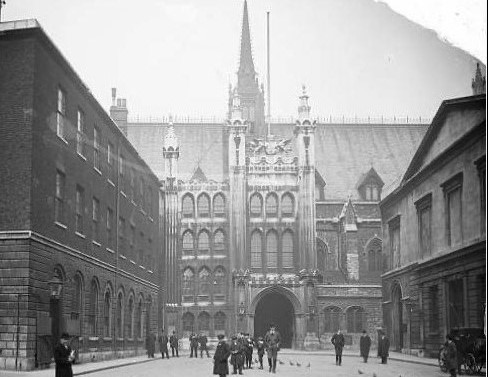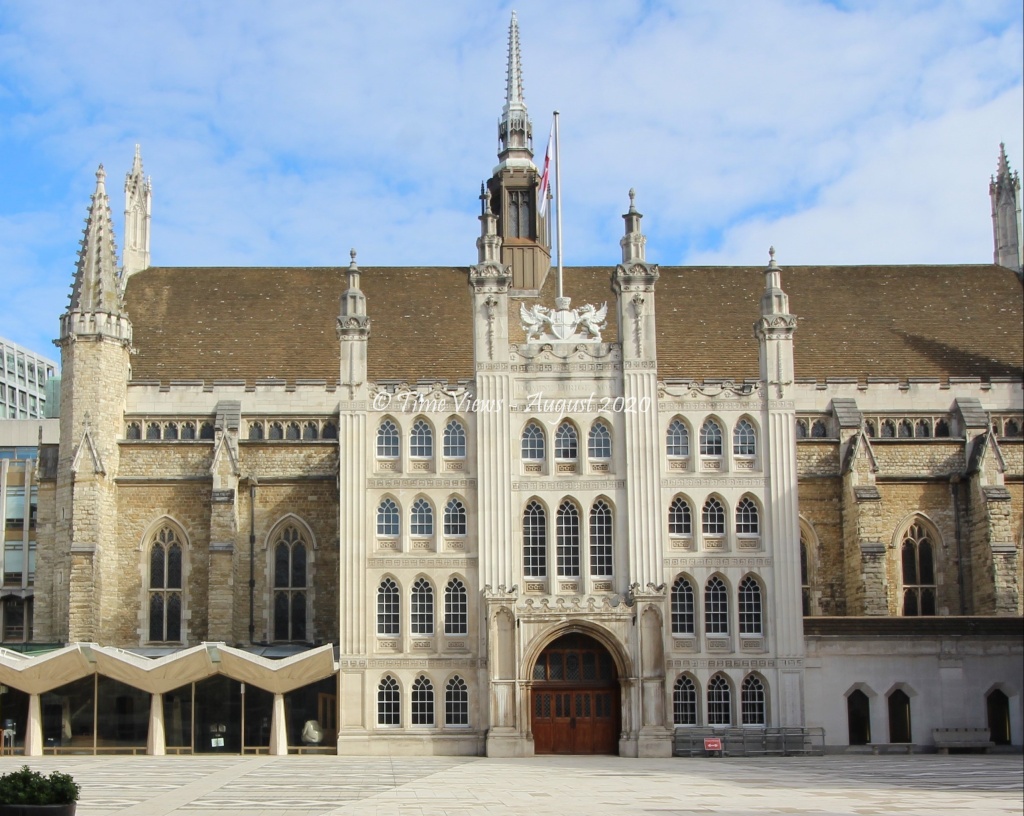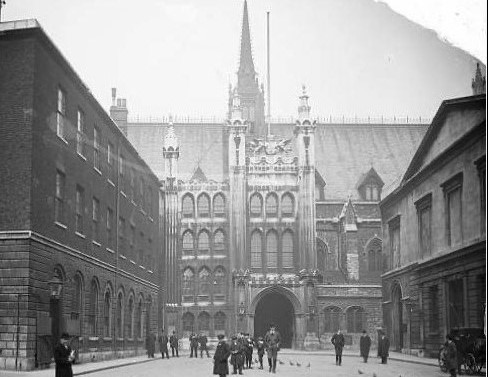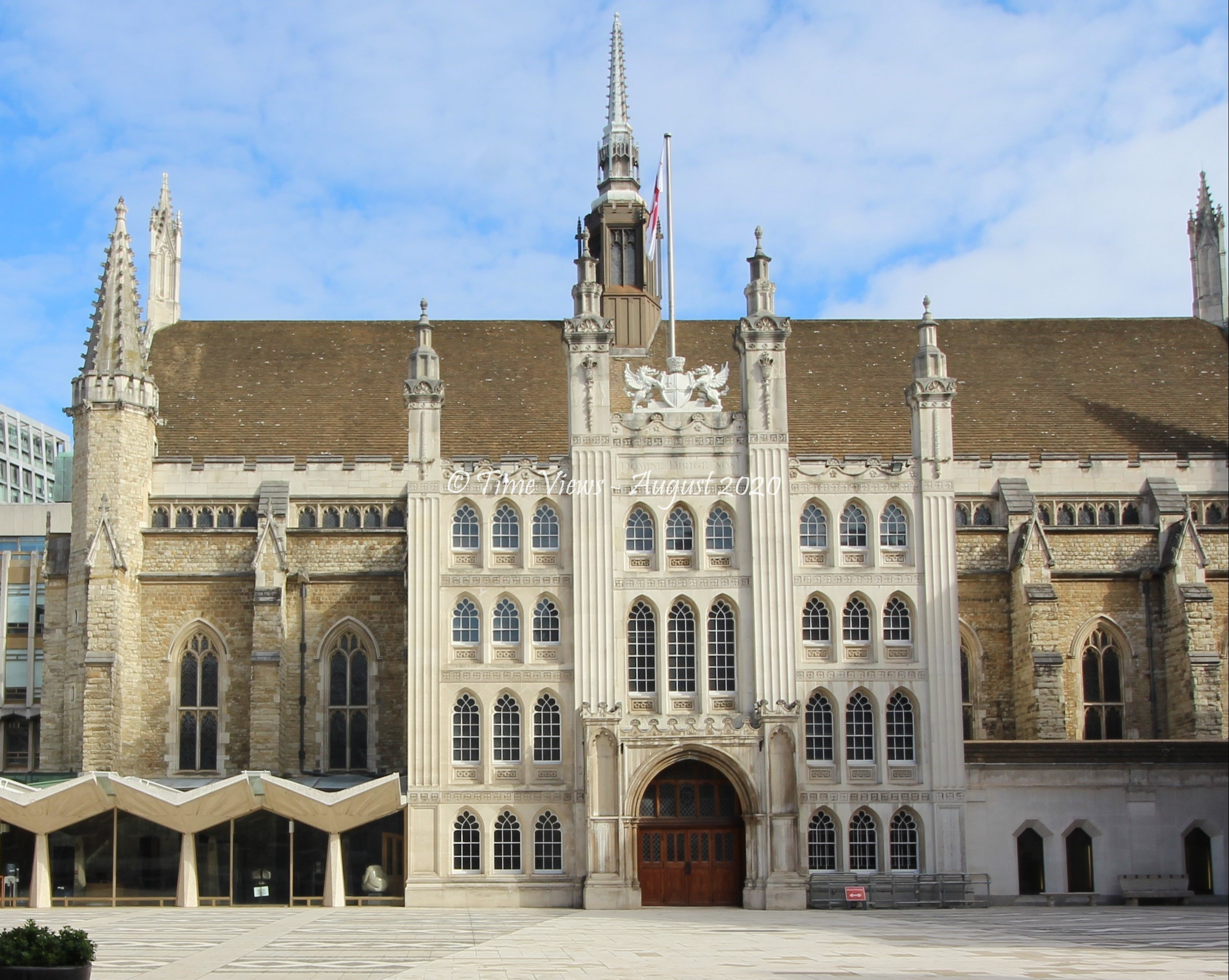
In the centre of this photograph (taken in the 1920s) is Guildhall – London’s ‘town hall’. Construction of the present building began in 1411, and it was completed by 1440. Guildhall was used for a number of trials of well-known people, including Lady Jane Grey and Thomas Cranmer. In 1605, it was also used for the trial of Henry Garnet for his part in the Gunpowder Plot.
The Great Hall within Guildhall was damaged during the Great Fire of London in 1666, and underwent a number of alterations and restorations. These included the addition of the present grand entrance (see above and below) in 1788. Guildhall suffered extensive damage following German bombing in late December 1940. The buildings to the left and right of Guildhall (dating from the 18th century) did not survive.
Image: Photographer unknown

By August 2020, standing in a more open space, Guildhall is still an impressive building. In 1988, the remains of a Roman Amphitheatre was discovered beneath Guildhall Yard. Originally built in AD70, by the 2nd century and following many changes, the amphitheatre had a capacity of around 6,000. It was used for public events, animal fighting, public executions, and gladiatorial combat.
When the Romans left in the 4th century, the amphitheatre was taken apart and the materials used for other buildings. It was left derelict until the 11th century when London’s growth necessitated the use of the land for buildings – ultimately, becoming the site for Guildhall.
There is a line of dark stone set into Guildhall Yard which follows the outline of the amphitheatre. This can be seen towards the bottom of the present-day photograph. The remains of the amphitheatre can be viewed (8 metres below ground) with the entrance to the site located in the Guildhall Art Gallery (to the right of the photograph).
Image: © Steven Miell (TimeViews)

